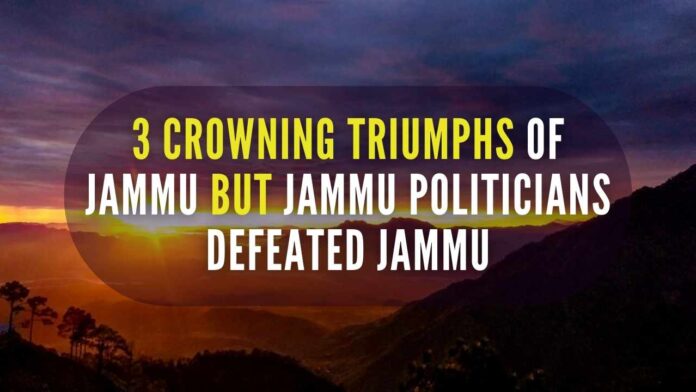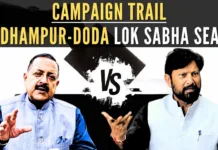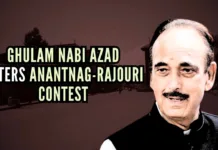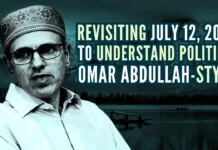
Dogra’s glory
Jammu Dogra’s history is glorious. The manner in which they established a mighty empire consisting of Jammu province, the whole of Ladakh, including Gilgit-Baltistan, and Kashmir and how they administered Kashmir and kept under check the subversive Kashmiri leadership between 1846 and 1947 is a shining example of their bravery, and unique military skills, diplomacy, political acumen, statesmanship, administrative ability, and capability and commitment. The Dogras also fought splendidly and scored crowning triumphs even in a highly hostile environment post-J&K accession to India with the powers-that-be in the South and North Blocks always at the beck and call of subversive, threatening, and essentially fanatic Kashmiri leaders of all hues. I will focus only on three crowning triumphs of Jammu and Jammu politicians who, mush to the happiness of the New Delhi-backed anti-Jammu Kashmiri leadership, let Jammu fail, and be defeated.
Jan 15, 1952 revolt in Science College
On January 15, 1952, the students of GGM Science College, Jammu, created a history of sorts. That day, they showed the separatist, fanatic, and anti-Jammu JL Nehru-appointed wazir-e-azam and Kashmir-based National Conference (NC) president, Sheikh Abdullah his place. What actually happened? The students bitterly opposed the Sheikh’s resolve to “hoist the NC flag” on the college premises. Besides, they objected to the NC’s flag being placed side by side with the national flag.
The nature of the protest was such that the rattled, challenged and alarmed Sheikh’s brutal force unleashed a reign of senseless brutalities on the students, including girl students. Not just this, the mortally afraid Sheikh administration imposed a curfew in Jammu for three days and also deployed the army on an unprecedented scale to defeat the movement and produce a moral effect. Commenting on the students’ movement in Parliament on March 3, 1952, Shibban Lal Saxena said that “a thousand Hindu women took part in the movement (in Jammu) and the fact that the Indian military had to be called to control the situation shows that the movement had a large public appeal behind it”. The point is that the Sheikh administration used brutal force against the students and their supporters (mostly from the RSS and the Praja Parishad) between January 15 and February 7, 1952, and put many students behind the bars.
The nature of oppression could be gauged from the fact that the Sheikh cabinet vide its decision (No. 137-C of Feb 15, 1952) confronted the “father of journalism’ in the state, Mulkh Raj Saraf, with a choice between a fine of Rs.1,000 and closure of his press. The specific charge against Saraf was that he sought to provoke a sort of rebellion against the “government established by law” by publishing the article in The Kashmir Mail, captioned “Kans rule (read Sheikh rule) and atrocities on children a good omen”, on February 5, 1952. The author of the article had only catalogued details of barbarities the police and the army had perpetrated on the students of GGG Science College and schools in Jammu. In the end, he had warned that such “brutal action” against children would lead to a “revolt against the cruel government of Sheikh Abdullah”.
Such was the situation then that Saraf was left with no option but to approach the J&K High Court. His plea was heard by the full bench comprising Chief Justice Janaki Nath Wazir, Justice Jia Lal Kilam, and Justice M A Shahmiri, but Saraf was not dispensed justice. For, in its April 5, 1952 judgment, the full bench expressed its inability to set aside the cabinet order on the ground that “the court has to construe the Act as it and that it is bound to give effect to the language of the Act as long as it is in existence even though it thinks that the provisions of the Act have not kept pace with the changed times”.
Satyagraha
It was this student revolt that was virtually responsible for the rise “Ek desh me do pradhan, do nishan, do vidhan nahin chalenge” on November 27, 1952, under the skillful and effective leadership of Pt Prem Nath Dogra. The Satyagraha was withdrawn on July 7, 1953. As was expected, the mortally afraid Sheikh Abdullah and PM Nehru left no stone unturned to kill and punish the satyagrahis and the movement.
It would be only desirable to quote verbatim a portion of what Pt Prem Nath Dogra said on September 6, 1953, in this regard while reflecting on the barbarities committed by the Nehru-backed Sheikh Abdullah. Dogra said: “During these eight months, terrible engines of suppression were let loose against us by the government with the help of the Government of India. The most virulent kind of propaganda campaign was started against us within and outside the state. Not merely courage, forbearance, and restraint in the face of the gravest provocation and above all, faith in the justice of our cause shown by the people of Jammu, proved too much for the might of both governments. Their bullets, lathis, and gas bombs, as also their systematic campaign of looting, harassing, dishonouring women in the most barbaric manner, and humiliating the people in various other ways, were done to break the spirit of the people. Ultimately, the oppressor has to admit his defeat. His failure to cow us down had become as potent as the vindication or the cause for which we struggled”.
The Sheikh’s brutal police force shot dead 15 satyagrahis across Jammu province during these days of Satyagraha while hoisting the national tricolour. Thirty nationalists were shot dead by the police in Delhi and Punjab. Around 2,000 people offered Satyagraha and more than 1,200 were sent to various jails. Some of the satyagrhis were thrown into Ranbir Canal.
Jammu issue
It needs to be underlined that the Praja Parishad’s Satyagraha was not just aimed at integrating J&K fully into India but was also aimed at making the authorities in the state and at the Centre to consider the political status of Jammu province vis-a-vis Kashmir. Pt Prem Nath Dogra’s speeches, Prof Balraj Madhok’s writings and speeches, and Jana Sangh president Syama Prasad Mookerjee’s historic Lok Sabha speech on August 7, 1952, and his February 12 and 13, 1953 letters to PM Nehru all highlighted the Jammu’s plight and Jammu’s aspirations. While Madhok favoured state status for Jammu, Mookerjee favoured provincial autonomy and, at the same time, didn’t oppose separate dispensation for Jammu province.
For example, on August 7, Mookerjee, inter-alia, said in the Lok Sabha that “the responsibility for preventing partition of J&K will rest on those who are today the masters of Jammu and Kashmir and are not prepared to adopt the Constitution of India”; that “what is the crime if today the people Jammu claim that they should be treated separately, in the sense that they should be allowed to join fully with India?; that “the same right which you (Sheikh and Nehru) claim for Kashmir may also be demanded by the people of Jammu and Ladakh; and that “Sheikh Abdullah himself said about a month ago that he would have no objection if the people of Jammu and Ladakh really felt that they would go to India”. And on February 12, 1953, Mookerjee suggested: “provincial autonomy to Jammu and Ladakh without changes of boundary”.
Negation of crowning triumph
The developments in Jammu, the martyrdom of Mookerjee in Srinagar, Kashmir, on June 23, 1953 (Mookerjee entered J&K on May 11, 1953, after breaking the obnoxious permit laws) and the resultant protests in different parts of India, including Delhi, the Sheikh’s seditious speeches at RS Pura and Srinagar and the criticism of the Nehru’s Kashmir policy finally culminated in the arrest and dismissal of Sheikh Abdullah on August 9, 1953. It was Jammu’s crowning triumph.
The iron was hot. It was the most opportune moment to strike to achieve the ultimate objectives – full integration of Jammu, Kashmir, and Ladakh into India and separate dispensations for Jammu and Ladakh, but the leadership missed the God-sent opportunity. Their goal was not the dismissal and arrest of Sheikh Abdullah; their goals were the application of the Indian Constitution to the state in its entirety and the end of Kashmiri domination and hegemony over Jammu and Ladakh. That the Jammu politicians abandoned the movement midway for reasons best known to them remains a riddle even today. As if all this was not enough, the Praja Parishad leadership merged their party with the Jana Sangh with Pt Prem Nath Dogra becoming its president at the Bhopal session of the party for 1955-56. The continuation of the Praja Parishad was the exigency of the time and the nation’s requirement to fight out the separatist forces in Kashmir, but the leadership thought otherwise and the results between 1953 and June 2019 were as they were. How sad!
February 28, 1998 revolt at Jammu University
On February 28, 1998, the Jammu Joint Students Federation (JJSF) and the Jammu University Research Scholars Association (JURSA) upped the ante against the Farooq Abdullah government. This writer and the Jammu University Teachers Association Prof O P Sharma of the Economic Department were an integral part of their movement, which gripped the whole Jammu province in no time, and they also contributed Rs.50,000 each to meet the financial needs. The specific demands were three – the establishment of Mata Vaishno Devi University at Katra, the establishment of Agriculture University at RS Pura, and separate competent authority for Jammu so that all the seats available in the Jammu-based technical and professional institutions became the sole preserve of the Jammu youth. In 1997-98, 80% of the medical seats went to Kashmir and Jammu’s share was a paltry 20%.
The movement became popular in no time. The Chamber of Commerce and Industry, the Bar Association Jammu, various social organizations, and several politicians belonging to different parties gave their unstinted support. The petty shopkeepers, the transport unions, and the people cutting across party and religious lines joined the movement. The participation of girl students was on an unprecedented scale. To strengthen the movement, advocate V R Wazir – headed Jammu Joint Action Committee (JJAC) was formed of which the JJSF was an integral part. The JJSF leadership consisted of Rajinder Jamwal (presently advocate), Haridutt Shishu (JURSA president), Gulam Ali (presently BJP RS MP), Rajesh Vidyarathi (presently journalist), Rakesh Chargotra (presently advocate), Jyoti Mishra, (presently advocate), Ajaat Jamwal (presently advocate), Zorawar Singh (presently journalist), Kuljit Singh, Darshan Manhas, Jyotsana Anthal, Geeta, Yogita, Mridhu Sharma, Shalini Sharma, Munish Chhiber (presently journalist), Mahesh Wali, to mention only a few. Ajaat Jamwal came from Delhi to join the movement. The ABVP also started a parallel movement.
Jammu and several other towns witnessed a bandh for 16 days – on March 6, 16, and 30 and between April 14 and April 25. All these were massive affairs. The movement continued till May 6, 1998. In between, JJAC organized a chain hunger strike between March 18 and April 26 at Mubarak Mandi; the JJSF activists sat on fast-unto-death between April 7 and May 6 in front of the GGM Science College’s main gate and set up round-the-clock langar in Science College; the national highways were blocked on April 24; the students disrupted the Law Minister P L Handoo’s programme in the University of Jammu on March 20; many BJP leaders, including two members of Parliament Vaid Vaishno Dutt and Chaman Lal Gupta and party president Daya Kishan Kotwal, courted arrest on April 15, to mention only a few. This period also witnessed several rounds of talks between the government representatives and the JJSF/ JJAC leadership, coupled with walkouts.
Crowning triumph
Convinced that his government could collapse under pressure from the below, chief minister Farooq Abdullah made the Legislative Assembly adopt Mata Vaishno Devi University and Agriculture University Bills on April 23, despite the bitter opposition of the ruling NC MLAs and BJP MLA from Chenani Prithvi Chand. The Farooq government adopted these historic bills at a time when the movement was in full swing. Such was the nature and magnitude of the movement. Indeed, the adoption of the universities’ bills was Jammu’s other crowning triumph. Not just this, another crowning triumph of Jammu was the Singhal Committee Report, which was submitted to the government on January 11, 1999. The committee accepted the demand put forth by the JJSF and the JUTA president and this writer and recommended that all the seats available in the Jammu-based technical and professional institutions be earmarked for the Jammu students.
The recommendation read like this: “The committee recommends that, as is the existing practice for admissions to polytechnic courses where one common entrance test is held by the competent authority for both Jammu and Kashmir divisions, but the selection list is declared separately for the two divisions, the competent authority may hold one common entrance test for the two divisions for medical and engineering courses, but the selection lists may be separately issued for the two divisions. The admissions in these colleges (government as well as private) should be made by the prevalent admission rules under their Acts (read the Jammu and Kashmir Universities Act, 1969). The seats in Jammu colleges (medical as well as engineering) should be earmarked for candidates belonging to the Jammu region and those in Kashmir colleges be earmarked for candidates belonging to the Kashmir region. A certain number of seats may be reserved in each of the universities for Ladakh region in proportion to its population”.
The Farooq government rejected the report on February 12, 1999, and ever since then, it has been gathering dust in the secretariat. It must remain a matter of shame that not one Jammu-based politician, Jammu-based minister, Jammu-based MP, and Jammu-based MLA or MLC ever demanded the implantation of the Singhal Committee report. The worst aspect of the whole situation was that the report was not considered even by the PDP-BJP coalition government (March 1, 2015-June 19, 2018).
June 28, 2008 revolt at Prem Nath Dogra Bhawan
On June 28, the Sonia Congress, the Manmohan Singh-led ragtag UPA government, J&K Governor N N Vohra, and chief minister Ghulam Nabi Azad joined hands to appease and please jihadists in Kashmir and outrage the religious sensitivities of the devotees of Lord Shiva. That day, the CM also subverted the J&K High Court’s unambiguous direction and snatched from the Shri Amarnath Shrine Board a piece of land at Baltal, Kashmir, which was meant for creating some additional facilities for the Amarnath pilgrims on a temporary basis. The objective was to mollify the former J&K CM Mufti Sayeed and his daughter Mehbooba Mufti and radical Islamists like Syed Ali Shah Geelani and Mirwaiz Umar Farooq.
This was dubbed as an official conspiracy hatched against the Hindus across the nation and on the same day, J&K BJP president Ashok Khajuria and this writer (then state BJP vice-president and spokesperson) addressed a press conference and threatened economic blockade, besides bandh on June 30. Credit goes to Ashok Khajuria who took up the issue in right earnest and demanded that the snatched land be retransferred to the Shrine Board. But it was not to be. And the result was a 62-day-long (June 28-August 31, 2008) movement, which was finally spearheaded by the RSS-sponsored Shri Amarnath Land Sangharsh Samiti. It was headed by senior RSS leader and advocate Leela Karan Sharma.
The Amarnath land movement, like the 1998 student movement, was a massive affair. It can legitimately be termed the “mother of all movements”. If Jammu observed a bandh for 15 days in 1998, the people of Jammu province observed a complete shutdown for more than 40 days. The Azad’s police shot dead more than a dozen young devotees of Lord Shiva across Jammu province and left many injured with some of them receiving grievous injuries. That it was a massive movement could be seen from the fact that the number of jail-goers in Jammu in just three days (Aug-18-20) was 9,20,000 and these included 1,52,000 women, 1,18,000 children, and 6,50,000. The government had to convert many grounds and buildings into make-shift jails to accommodate the satyagrahis. It is significant to note that while the number of jail-goers during the so-called nationwide Civil Disobedience Movement (1930-31, 1932-34) of M K Gandhi was “92, 124”, during the M K Gandhi’s Non-Cooperation Movement (1920-Feb 22), the number of jail-goers was just about “30,000”.
Another crowning triumph
On July 7, 2008, the Ghulam Nabi Azad government fell. It was yet another crowning triumph of Jammu. The collapse of the Azad government didn’t change the attitude of the determined people of Jammu. They continued the agitation. It was at 4.30 a.m. on August 31 that the government and the Sangharsh Samiti reached an agreement with Leela Karan Sharma declaring the suspension of the movement and also declaring that the Sunday’s (August 31 rally) “Sangharsh Rally”, had been converted into a “Victory Rally”, which would be held at Maulana Azad Stadium. These were all poignant moments. In short, the occasion turned out to be a blend of Holi, Diwali, and Baisakhi in most parts of Jammu province. People organized huge, huge rallies braving all odds and defying curfew restrictions. It was indeed an eventful day. The agreement led the people to believe that they were on the threshold of a new era.
It is a matter of grave concern that the authorities have not implemented that agreement to date. What is all the more mindboggling is the fact that Sangh Parivar didn’t do anything to force the authorities to implement the agreement. The result is that many participants in the movement are facing criminal proceedings even today.
Even more disturbing is the fact that certain Jammu-based marginal politicians continue to hobnob and flirt with the destroyers of Jammu, including Farooq Abdullah and Mehbooba Mufti. Will they refashion their approach and fight for the self-respect of Jammu province?
Note:
1. Text in Blue points to additional data on the topic.
2. The views expressed here are those of the author and do not necessarily represent or reflect the views of PGurus.
PGurus is now on Telegram. Click here to join our channel and stay updated with all the latest news and views
For all the latest updates, download PGurus App.
- ‘Kashmir My core constituency’: Revisiting July 12, 2003 to understand politics, Omar Abdullah-style - March 15, 2024
- Total deviation from traditional approach: Seven takeaways from PM Modi’s March 7 Srinagar visit - March 9, 2024
- Status of political parties: Why is further J&K reorganization imperative? - March 1, 2024










